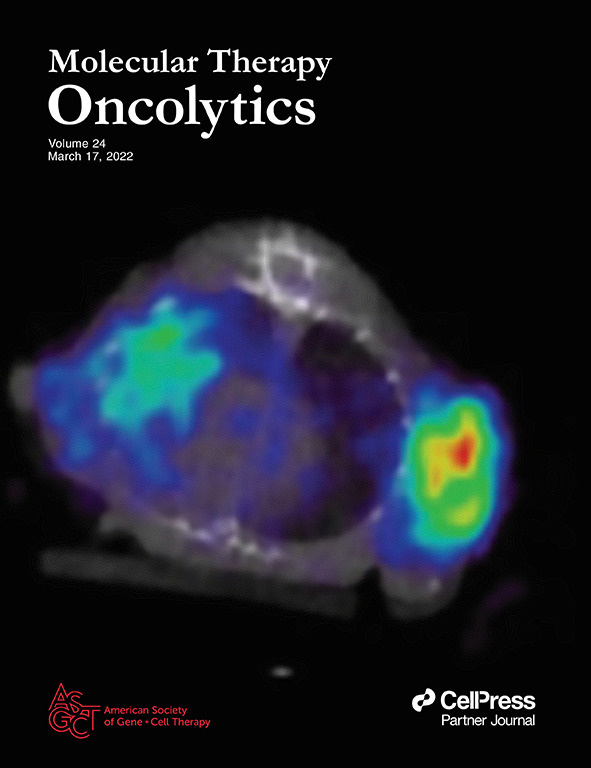The Vector
Volume 11, Issue 4: April 2022
Editorial Team
Edith Pfister, PhD – Editor, The Vector
Karen Bulaklak, PhD – Associate Editor, The Vector
Jon Brudvig, PhD – Junior Editor, The Vector
Inside This Issue
Leadership Message
Breaking Through
From Molecular Therapy
Society News
Career Center
Public Policy
Industry News
Leadership Message
Verify Your Vaccination if You're Attending #ASGCT22 In Person
.aspx?width=125&height=125)
Hello ASGCT Members,
We’re almost there! The Annual Meeting is quickly approaching and I’m looking forward to being back together in Washington, D.C. to share our science and to celebrate 25 years of the Society. If you have not registered, please do so here, and add one or more of our 13 excellent Pre-meeting Workshops for an extra day of learning. Whether you’re attending in person or virtually, anything you miss or would like to watch again will be available on demand for 30 days following the event. If you’re joining us in person, please remember to verify your vaccination before you leave for the meeting.
In addition to presentations on top-tier gene and cell therapy research, we have some wonderful on-site events that I encourage you to attend. The Mentor Meet-Up will be held from 6-8 p.m. on Monday, May 16. Anyone interested in serving as a mentor or mentee to another meeting attendee can register for that event here. If you’re looking for a job, or if you’re an employer who is hiring, check out our Career Fair from 3-5 p.m. on Tuesday, May 17. On May 18, the final night of the meeting, purchase a ticket to the Closing Night Reception at the International Spy Museum, where you’ll be able to enjoy the museum exhibits, appetizers, and drinks from 8 to 11 p.m.
Before we get to the Annual Meeting, register for free to join us for another Lunch & Learn on Thursday, April 28. Our speakers for the event, Laura Hameed, David Dismuke, PhD, and Michelle Berg, will discuss AAV vector manufacturing. As always, there will be time for Q&A and the recording will be available after the event for on-demand viewing.
Another event we’re looking forward to is our second symposium with the International Society for Stem Cell Research (ISSCR). ASGCT Members can receive registration discounts for this hybrid event Sept. 21-23, which will be held in Madison, WI and virtually. Learn more about the event and how to register here.
I hope to see many of you next month at the meeting!
Sincerely,
Terry Flotte, MD
ASGCT Secretary
Breaking Through
Circulating neurofilament light chain as a promising biomarker of AAV-induced dorsal root ganglia toxicity in nonclinical toxicology species
Fader KA, Pardo ID, Kovi RC, Somps CJ, Wang HH, Vaidya VS, Ramaiah SK, Sirivelu MP
DOI: https://doi.org/10.1016/j.omtm.2022.03.017
Summary by Jon Brudvig, PhD
Adeno-associated virus (AAV) vectors are a favored modality for gene therapy due to their efficient transduction, relatively low immunogenicity, and generally favorable safety profile. However, recent studies in animal models have given rise to new safety concerns - namely, that AAV administration can irreversibly damage autonomic and sensory neurons (dorsal root ganglia, in particular). These cell populations are transduced by some AAV vectors at exceptionally high rates, leading to degeneration caused by capsid burden, immune responses, stress from transgene overexpression, or some elusive combination thereof. In most cases, these effects are observed only through postmortem examination of tissues and a lack of clinical sequelae has made this a difficult problem to monitor in human studies. In a new article in Molecular Therapy Methods & Clinical Development, Fader et al. present circulating neurofilament light chain (NF-L) as a biomarker that could address this problem.
In laboratory animals, AAV-induced sensory neuron toxicity is characterized in part by sporadic degeneration of sensory neuron axons and cell bodies and glial cell activation. Accordingly, proteins associated with these cell populations might be expected to be elevated in biofluids in affected animals. Following this logic, Fader et al. examined a range of neuronal and glial proteins for their suitability as biomarkers. Rats and cynomolgus macaques were treated with a range of doses of AAV9-family vectors, and biofluids were collected at various time points over one month. Biomarker levels were measured in serum, plasma, and CSF samples from each animal at each time point and were compared to postmortem histopathology scores. Strikingly, in both rats and macaques, circulating (blood) NF-L levels were strongly associated with sensory neuron pathology. All uninjured animals had healthy, low levels of NF-L, while animals exhibiting sensory neuron pathology exhibited NF-L elevations. NF-L increases were generally progressive, with the highest values exhibited at the latest time point examined (29 days).
The consistency of these results across disparate species suggests that NF-L has excellent potential to function as a biomarker for AAV-induced sensory neuron toxicity in human studies. While it is currently unclear to what extent this problem even exists in humans, the FDA has stressed the need for clinical monitoring. Sponsors have struggled to respond with their limited tool set. Behavioral deficits have thus far failed to consistently manifest, and neurophysiological measurements such as nerve conduction velocity lack sensitivity for detecting all but the most severe cases. As a biomarker, NF-L would bring its own challenges, particularly in patients being treated for neurodegenerative conditions. Clinical validation will also be a hurdle and may not be fully realized for some time given the expected low penetrance among AAV-treated individuals. Still, this work brings the field one step closer to a noninvasive, sensitive, and easily deployable biomarker that could enable clinical monitoring of this problem.
From Molecular Therapy
_1.aspx?width=125&height=162)
Now open: Search for Molecular Therapy—Oncolytics editor-in-chief: ASGCT has opened its search for the next editorial leader of MTO as the inaugural editor-in-chief Dr. Yuman Fong’s term ends Dec. 31, 2022. MTO is an online, open-access journal focusing on the development and clinical testing of viral, cellular, and other biological therapies targeting cancer. Its 2020 impact factor is 7.200.
Applications must include a letter of intent detailing relevant experience and vision for the journal as well as a current C.V. Interested ASGCT members may submit inquiries to ASGCT CEO David Barrett.
Molecular Therapy—Methods and Clinical Development call for papers: Submit a paper to a special issue on evidence generation and reproducibility in cell and gene therapy research. Learn more about this special issue by reading this editorial and submit a paper by April 30, 2022.
Latest MT issues: Check out the most recent issues of these Molecular Therapy family journals:
Society News
Congratulations to Our 2022 Award Recipients
ASGCT is proud to announce the winners of the 2022 Annual Meeting Awards! Congratulations to: Donald Kohn, MD, recipient of the Outstanding Achievement Award; Lindsey George, MD, Matthew Hirsch, PhD, Morgan Maeder, PhD, and Christopher Peterson, PhD, recipients of the Outstanding New Investigator Award; P.J. Brooks, PhD, recipient of the Sonia Skarlatos Public Service Award; and Kathy High, MD, recipient of the Jerry Mendell Award in Translational Science. Learn more about them on our blog.
There's Still Time to Register for #ASGCT22
We can't wait to be back in person May 16-19 for our first Annual Meeting in a convention center! Join us (safely) in Washington, D.C. to learn from the best gene and cell therapy research, network with colleagues, explore innovative products and services in the Exhibit Hall, and more. If you're attending in person, remember to verify your COVID-19 vaccination before you leave for the meeting.
Vote by April 20 to Select Five New Board Members
Members and Transitional Members: Help us decide the future of the Society and vote in the ASGCT election. You can learn more about our slate of candidates and cast your ballot by Wednesday, April 20. Use this opportunity to make your voice heard!
Career Center
Are you looking for a job in the field of gene and cell therapy? Check out the new ASGCT Career Center for great opportunities with industry, government, and academic organizations. Sign up to receive alerts for open jobs in your area.
If you're from a recruiting institution, advertise in the Featured Jobs section to target the 4,000+ audience of The Vector.

Featured Jobs
Public Policy
Increased Funds for NIH, FDA Included in President Biden's Budget Request
Late last month, President Biden submitted his annual budget request to Congress. This request marks the beginning of the federal funding cycle and lays out a general outline for the administration’s priorities and projections for fiscal year (FY) 2022 – 2023. After receiving the president’s budget request, both the House and the Senate appropriations committees will prepare separate budget resolutions based on the information gathered during a series of subcommittee hearings.
The president’s budget is of particular importance for the gene and cell therapy space as it lays out the administration’s health policy, which has a direct impact on research funding levels and grants, funding for agency reviewers, and the creation of new programs. ASGCT supports multiple areas of the president’s budget request, most notably a 27% increase in total HHS appropriations including $49 billion to the NIH and $3.7 billion to FDA. The president’s request also designated $5 billion of NIH’s proposed budget for the creation of an Advanced Research Projects Agency for Health (ARPA-H).
While there is still debate over where this new biomedical research agency will be housed, the overall goal is to speed development of new transformative therapies by using a platform approach. ASGCT believes that the ARPA-H concept could be especially helpful for advancing gene and cell therapies. Improvements in manufacturing of these therapies, which the Biden Administration has referenced as one example of a transformative project ARPA-H could help drive, could result in both greater manufacturing capacity and efficiencies in manufacturing processes.
The Society is encouraged by the administration’s commitment to funding research and development agencies and will be monitoring the budget as it moves through the various congressional committees. For additional analysis of how the budget process impacts the development side of gene therapy, sign up for ASGCT’s monthly policy newsletter, The Advocate.
Save the Date for the 2022 Policy Summit
ASGCT’s fourth annual Policy Summit will take place September 26-27 in a hybrid format – attendees will be able to join either in Washington, D.C. at the JW Marriott or online. New this year, the Policy Summit will be a 1.5-day program with a dialed-in focus on the key issues in regulatory and government affairs policy for gene and cell therapies. Information on the agenda and registration are coming soon! In the meantime, catch up with recaps of previous Policy Summits.